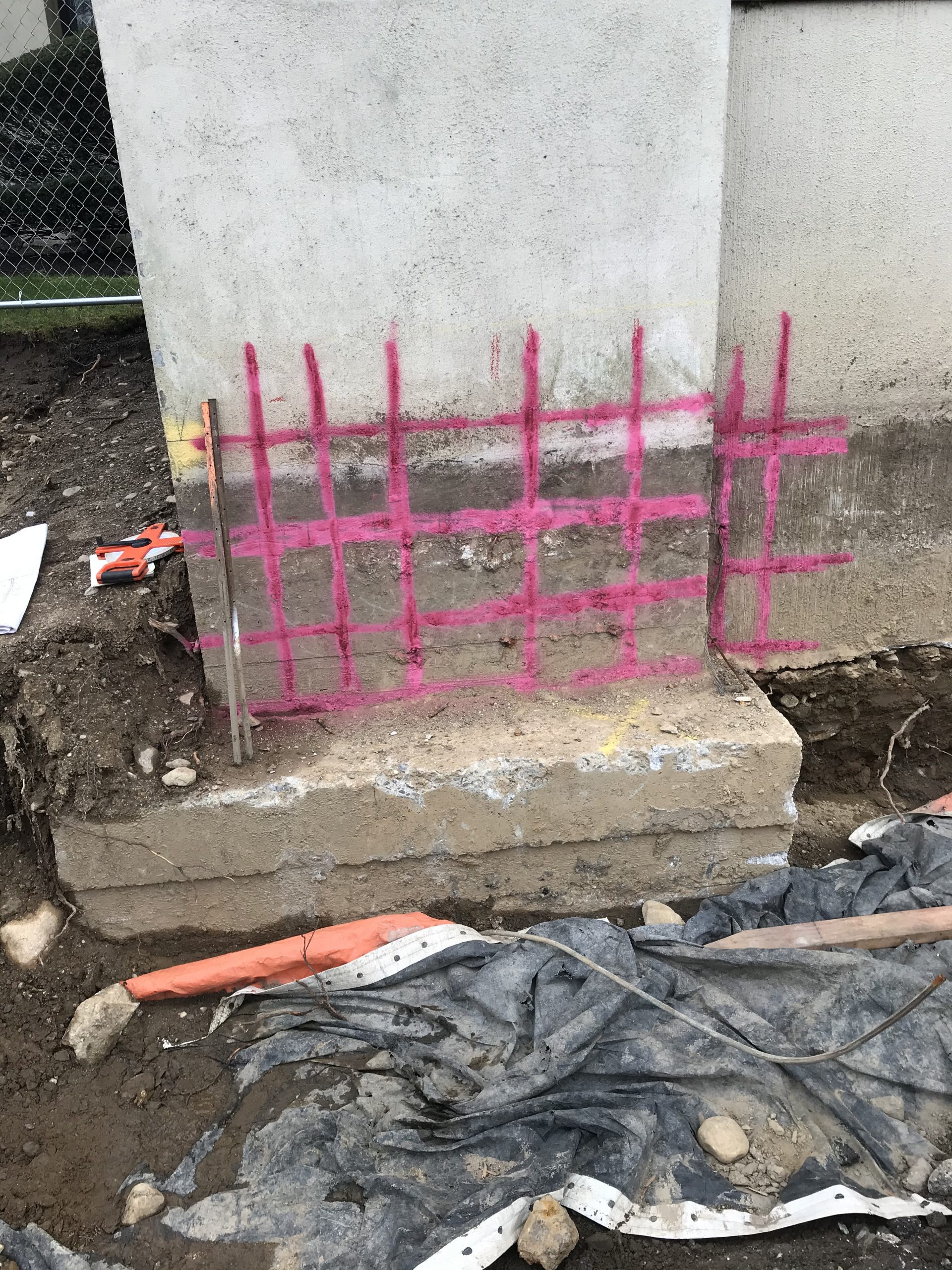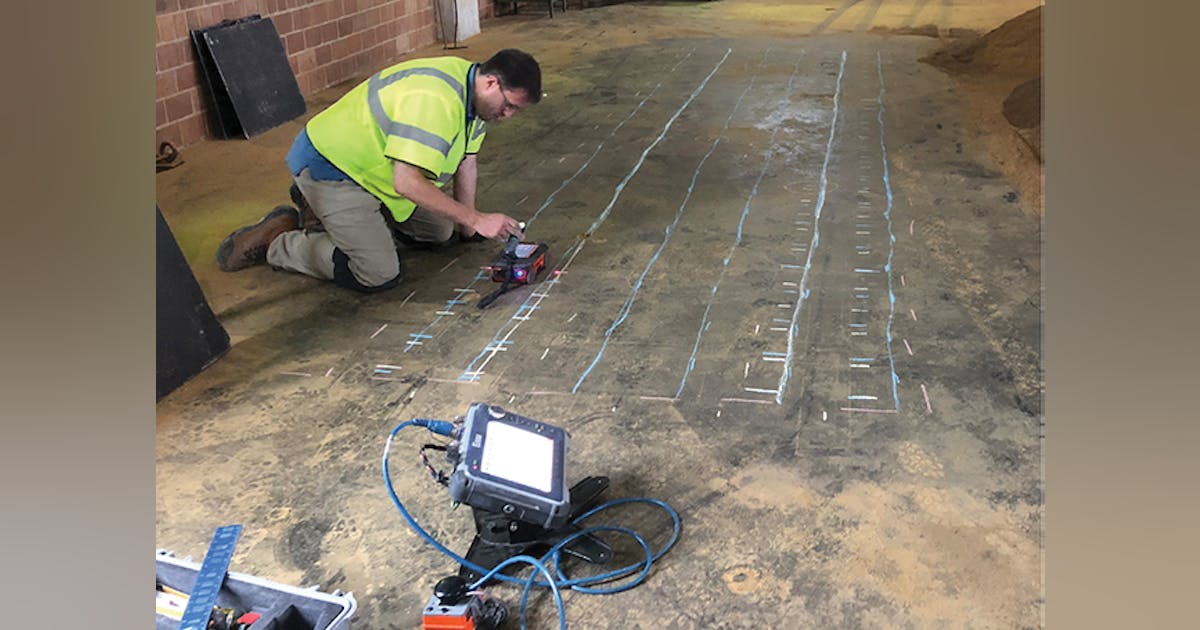Elevate Your Building Refine With the Strategic Insights of Concrete Scanning for Improved Efficiency
In the realm of contemporary building methods, the mission for efficiency and precision is extremely important. Accepting innovative innovations has ended up being a foundation for achieving these goals. One such technology that has transformed the construction market is concrete scanning. By using the tactical understandings offered by concrete scanning, building and construction professionals can unlock a world of enhanced productivity and structured processes. The ramifications of integrating concrete scanning go far beyond surface-level benefits, offering a profound influence on job results.

Advantages of Concrete Scanning
Enhancing task effectiveness and safety and security, concrete scanning uses a non-destructive technique for discovering covert objects within concrete structures. By making use of technologies such as ground-penetrating radar (GPR) and concrete x-ray imaging, construction groups can precisely find rebar, post-tension cable televisions, electrical conduits, and various other blockages prior to exploration, cutting, or coring into concrete.
The advantages of concrete scanning are numerous. Firstly, it minimizes the threat of unexpected damage to vital structural components, lowering the probability of expensive repair work and project hold-ups. Secondly, it boosts employee security by providing real-time insights right into the place of hidden threats. Building and construction sites can be intricate atmospheres, and recognizing what lies underneath the surface can prevent mishaps and injuries.
Furthermore, concrete scanning promotes general task effectiveness by enhancing process and stopping rework. By recognizing possible problems early on, teams can change their plans proactively, conserving time and sources in the lengthy run. In essence, the adoption of concrete scanning technologies is a strategic investment that pays returns in regards to efficiency, cost-effectiveness, and safety and security.
Innovation Combination for Effectiveness
Concrete scanning's ability to enhance process and improve job effectiveness can be more maximized via critical assimilation of advanced innovations. By incorporating Building Details Modeling (BIM) software program right into concrete scanning procedures, building teams can accomplish a greater level of precision and sychronisation. BIM allows for the development of 3D models that provide detailed insights into the task, making it possible for much better decision-making and decreasing the chance of mistakes. Furthermore, the integration of Increased Fact (AR) innovation with concrete scanning can boost on-site visualization, enabling job managers and workers to overlay electronic details onto the physical environment in actual time. This can facilitate a lot more exact positioning of elements and boost communication among team participants. Furthermore, the usage of drones for aerial surveys in combination with concrete scanning can speed up information collection and evaluation, allowing faster decision-making and development monitoring. On the whole, the critical integration of these modern technologies can substantially increase efficiency and efficiency in construction jobs.
Avoiding Costly Errors
Exactly how can careful interest to information throughout concrete scanning procedures aid construction teams in preventing expensive errors? Concrete scanning plays a vital function in recognizing possible concerns prior to they intensify right into pricey blunders. By making use of innovative scanning modern technologies such as Ground Permeating Radar (GPR) and electromagnetic induction, construction teams can accurately discover rebar, energies, spaces, and other blockages within concrete structures. This level of accuracy makes it possible for job supervisors to make enlightened choices relating to the layout and design of their building plans, reducing the threat of unexpected damages to essential framework during the building procedure. In addition, concrete scanning assists in making sure structural integrity by recognizing weaknesses or flaws in the concrete early, allowing for timely repairs and alterations. By proactively addressing these issues, building groups can avoid expensive errors such as rework, delays, or safety and security hazards that might emerge from overlooked discrepancies in the concrete structure. Inevitably, investing in complete concrete scanning procedures verifies to be an economical technique over time, saving both time and sources while boosting total job performance and top quality.
Enhancing Job Administration
Meticulous interest to information throughout concrete scanning refines not only aids in staying clear of costly errors yet also her explanation lays a strong foundation for effective task administration in building and construction ventures. By including concrete scanning innovation right into job monitoring approaches, building groups can simplify operations, boost interaction, and guarantee that jobs remain on track.
Concrete scanning supplies useful understandings right into the architectural honesty of existing components, allowing project managers to make informed choices pertaining to design adjustments or construction sequences. This aggressive approach lessens the danger of unexpected hold-ups or revamp, ultimately saving time and sources. Furthermore, the data acquired from concrete scanning can be incorporated into Structure Details Modeling (BIM) platforms, making it possible for real-time cooperation and sychronisation among various stakeholders.
In addition, concrete scanning aids task managers identify possible threats or challenges before they rise right into larger issues, advertising a much safer job atmosphere for all involved. With enhanced exposure and accuracy provided by concrete scanning technology, project supervisors can successfully plan, check, and execute construction tasks with greater performance and self-confidence.
Optimizing Productivity
To boost productivity in building and construction jobs, executing reliable methods and making use of innovative modern technologies is important. Maximizing performance includes improving procedures, maximizing resource allowance, and reducing downtime. One key element of taking full advantage of productivity is via the adoption of concrete scanning modern technology. By using ground-penetrating radar (GPR) and other scanning approaches, building and construction teams can precisely find rebar, avenues, and other subsurface components, minimizing the risk of expensive mistakes and delays during excavation and boring.
Furthermore, embracing Structure Details Modeling (BIM) software application can dramatically boost performance by developing thorough 3D designs that enhance job visualization learn this here now and sychronisation among various professions. BIM enables far better clash detection, allowing problems to be determined and solved prior to building even starts, saving time and sources over time.
Applying a lean building technique, which concentrates on getting rid of waste and optimizing efficiency throughout all job phases, is an additional reliable method for taking full advantage of productivity. By fostering partnership, communication, and continuous enhancement, building teams can work more cohesively in the direction of achieving task objectives in a structured and productive way.
Conclusion
To conclude, the tactical implementation of concrete scanning in the building and construction process supplies numerous benefits, including increased efficiency, expense savings, boosted task administration, and boosted productivity. By incorporating this technology, building groups can stay clear of pricey errors, improve their procedures, and optimize their total task output. Concrete scanning is a useful device that can elevate the construction process and lead to more successful and rewarding outcomes.
